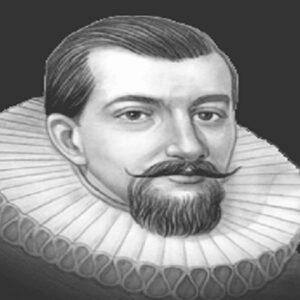Henry Hudson was an English navigator and explorer who lived in the early 17th century. He engaged on many sailing excursions, not only for the English but also for the Dutch, in both the Old and New Worlds, in an attempt to discover a short path from Europe to Asia through the Arctic Ocean. He worked for the Dutch East India Company, and while looking for a western route to Asia, he spent some time investigating the area around what is now New York, which led to the discovery of the river that was later named after him. Hudson was one of the most well-known explorers, but he couldn’t locate what he was looking for—the shortest path from Europe to Asia. However, during his career as a professional explorer, he produced numerous noteworthy discoveries, and his trips paved the path for subsequent exploration and settlement of North America. Despite the celebrity he achieved later in life, his early years are still shrouded in mystery. His parents’ names are unknown, as are the circumstances surrounding his birth. However, it is thought that he began working as a cabin boy when he was young and grew into a renowned explorer after years at sea.
Childhood and the First Years of Life
Nothing is known for certain about his birth or early life. He was born about 1565, according to some accounts, and around 1570 according to others. There is also no information about his parents or family.
He is thought to have worked as a cabin boy when he was younger, gaining years of experience at sea.
A Later Years
By the beginning of the 17th century, Hudson was most likely a seasoned and skillful sailor. Hudson was employed by the Muscovy Company of England in 1607 to establish a northerly path to Asia’s Pacific coast. Several companies from several countries competed to discover the Northwest Passage to Asia during this time.
On May 1, 1607, Hudson, his son John, and ten others embarked on the 80-ton Hopewell. They started north and arrived on Greenland’s east coast in June.
He followed the edge of the polar ice pack east until he reached the archipelago of Svalbard (Spitsbergen). The expedition was unable to continue due to severe conditions and returned to England in September.
The following year, in 1608, the East India and Muscovy Companies dispatched him on another search for the route. The trip left London in April and traveled about 2,500 miles to Novaya Zemlya, Russia, which is well above the Arctic Circle. Even though it was summer, the ice was impenetrable, and the voyagers were compelled to return.
Hudson became a commander for the Dutch East India Company in 1609 and was assigned to a third northeast journey. In April, he set sail aboard the Dutch ship Halve Maen from Amsterdam (Half Moon). He was told to find a northern route to Asia by heading north of Russia this time.
Due to poor climatic conditions, the sailors were unable to investigate the designated path and instead decided to seek a westerly way through North America.
They traveled down the North American coast, reaching as far south as the Chesapeake Bay, after crossing the Atlantic Ocean. Hudson then went to explore the area around New York, where he discovered the river that would later be named after him.
Hudson was halted in the English port of Dartmouth as the explorers were returning to the Netherlands. Hudson was forbidden from working for the Dutch again by the English authorities, who were enraged that he was exploring another country.
Hudson intended to go on another expedition to Asia in search of the Northwest Passage, and he was able to persuade the English authorities to fund it. The Virginia Company and the British East India Company provided the funds.
In April 1610, he set sail from London aboard the Discovery, a 55-ton ship. In May, he arrived in Iceland, and at early June, he arrived in the south of Greenland. The crew was ecstatic at this point because they believed the ship was on the verge of discovering the Northwest Passage.
The explorers arrived in what is now the Hudson Strait near Labrador’s northern tip by the end of June. Hudson and his companions spent several months investigating the area but were unable to locate a way to Asia. Furthermore, by November, winter had arrived, and the crew had to relocate ashore.
During the long winter months of captivity, tensions between crew members grew. Several crew members wanted to return home by the time the weather improved enough for transit to begin in June 1611. Hudson, on the other hand, was adamant that they keep searching for the elusive entrance.
At this point, several crew members revolted against Hudson, and he, his son, John, and seven other crew members were cast adrift from the Discovery in a small shallop, or open boat.
His Major Breakthroughs
While on an expedition to find the Northwest Passage in 1609, Henry Hudson came across a river near what is now New York, North America.
He investigated the area around the river and declared it the first Dutch settlement in North America. His name was later given to the river.
Personal History and Legacy
According to some sources, Henry Hudson was married to Katherine and had three sons.
Hudson and the other castaways were never seen again after being thrown into the shallop. The castaways are thought to have died after only a few days.
In New York and New Jersey, the Hudson River, Hudson County, the Henry Hudson Bridge, the Henry Hudson Parkway, and the town of Hudson, New York are all named after this renowned explorer.
Estimated Net worth
Henry Hudson is one of the wealthiest explorers and one of the most well-known. Henry Hudson’s net worth is estimated to be $1.5 million, according to Wikipedia, Forbes, and Business Insider.


